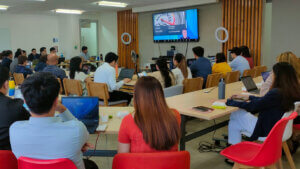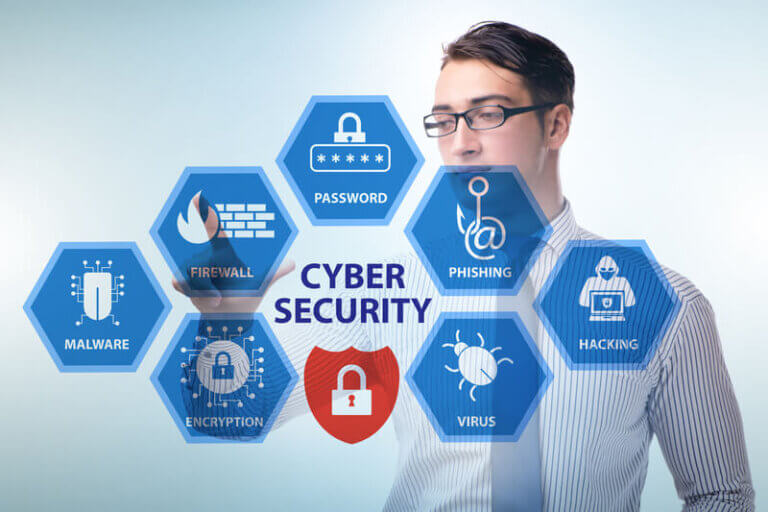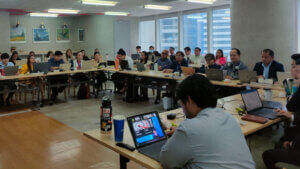In today’s rapidly evolving digital landscape, cybersecurity has become a critical concern for individuals and organizations alike. The rise in cyberattacks, especially in regions like the Philippines, highlights the urgency of understanding and mitigating these threats. In a recent John Clements Cybersecurity Awareness Training session, facilitated by Sean Hanna, the Founder and Director of Nemstar, John Clements employees gained valuable insights into the complexities of cybersecurity. This article summarizes the key takeaways from the session, offering a comprehensive guide to understanding and combating cyber threats.

The Current Cybersecurity Landscape
The world is witnessing an alarming increase in cyberattacks, with the Philippines being particularly hard-hit. In 2023 alone, there was a 60% increase in cyberattacks in the country, with a threefold rise within just one year. The trend continued into 2024, with the first quarter experiencing a fourfold increase compared to the previous year. These attacks span multiple industries, with Business Email Compromise (BEC) being a prevalent method used by attackers.
One of the primary threats discussed during the session was Advanced Persistent Threats (APT). These are highly organized groups of hackers who target specific entities with the intent of stealing data or causing disruption. Sean Hanna referenced Sun Tzu’s famous quote from The Art of War: “If you know the enemy and know yourself, you need not fear the result of a hundred battles.” This highlights the importance of understanding cyber threats and preparing adequately to defend against them.
The Hack Chain: How Cyberattacks Unfold
Cyberattacks are often complex, involving multiple stages known as the Hack Chain. Understanding this process is crucial in preventing and mitigating attacks.
- Reconnaissance: The first stage involves attackers gathering information about their targets. This can be done through social media, the dark web, press releases, and even simple Google searches. Websites like “Have I Been Pwned?” allow individuals and organizations to check if their data has been compromised.
- Vulnerabilities: Attackers look for weaknesses to exploit. These can include reused passwords, unpatched software, and unencrypted communication. For instance, using the same password across multiple systems or using personal communication apps like WeChat for business purposes can create significant risks.
- Zero-Day Attacks: One of the most feared types of cyberattacks is the zero-day attack. This occurs when a vulnerability is discovered by a bad actor before any protection is available, leaving systems defenseless. Zero-day vulnerabilities are highly valuable, with some being sold for millions of dollars to the highest bidder.
- DNS Vulnerabilities: The Domain Name System (DNS) is another weak point in cybersecurity. DNS is responsible for translating domain names into IP addresses, but it lacks encryption, making it vulnerable to attacks like DNS poisoning.
- Exploitation: Once a vulnerability is identified, attackers can weaponize it. This is often done through smart devices and the Internet of Things (IoT), which can be used to gain access to networks and critical national infrastructure.
- Payload (Backdoor): The final stage involves delivering a payload, such as spyware or ransomware, which provides the attacker with remote access to the victim’s system. Backdoors allow hackers to spy on users, steal data, and even control devices like webcams and microphones.
- Phishing and Pharming: Social engineering plays a significant role in cyberattacks. Phishing involves tricking individuals into providing sensitive information, while pharming redirects users to fake websites designed to steal their data. With a 90% success rate, these methods remain highly effective.
Case Studies: Cyberattacks in the Philippines
The Philippines has seen several high-profile cyberattacks in recent years. The 70 million Comelec data breach and the Jollibee breach in June 2024 are among the largest in the country’s history. These incidents highlight the importance of swift response times and comprehensive action plans. For example, during a ransomware attack on MTU, the threat was detected within three hours and confirmed within 18 hours. This rapid response was critical in mitigating the damage.
Cybersecurity Solutions and Best Practices
To defend against cyber threats, a multi-layered approach is essential. Sean Hanna emphasized three lines of defense:
- IT and Cyber Teams: These teams are responsible for implementing the best firewalls, antivirus software, patches, backups, and encryption to protect the organization’s systems.
- Business Culture: Cybersecurity is not just an IT issue; it’s a business concern. Organizations must foster a culture of security awareness and ensure that all employees understand their role in protecting data.
- Individual Awareness: Every individual within an organization plays a role in cybersecurity. Simple actions, like not clicking on suspicious links or verifying email sources, can prevent major breaches.

Legal and operational requirements are also crucial in maintaining cybersecurity. Organizations in the Philippines must comply with laws such as the Cybercrime Prevention Act and the Internet Transactions Act. Good cyber governance involves embedding cybersecurity into every aspect of the organization, from identifying critical assets to collaborating with supply chain partners.
Protecting Corporate and Personal Data
Data is a valuable asset, and protecting it should be a top priority for both organizations and individuals. Corporate data, such as customer information and financial records, must be safeguarded with strict security policies. Individuals should also take steps to protect personal data, including using strong, unique passwords, enabling multi-factor authentication, and being cautious with mobile devices.
At home, securing your Wi-Fi network, regularly updating devices, and educating family members about online safety are essential. Elderly family members and children are particularly vulnerable to cyber threats, making it important to discuss the dangers of the internet and safe practices.
The Bottom Line: Proactive Measures for Cybersecurity
Cybersecurity is a continuous process that requires vigilance and proactive measures. By understanding the nature of cyber threats and implementing the strategies discussed in this article, individuals and organizations can better protect themselves from potential attacks. Remember, cybersecurity is not just the responsibility of IT departments; it’s everyone’s responsibility.
Stay ahead of cyber threats with expert guidance from John Clements Consultants. Contact us today and learn how to secure your data and protect your organization from evolving cyber risks.






